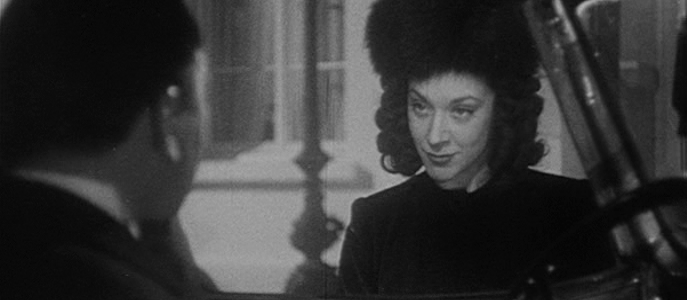
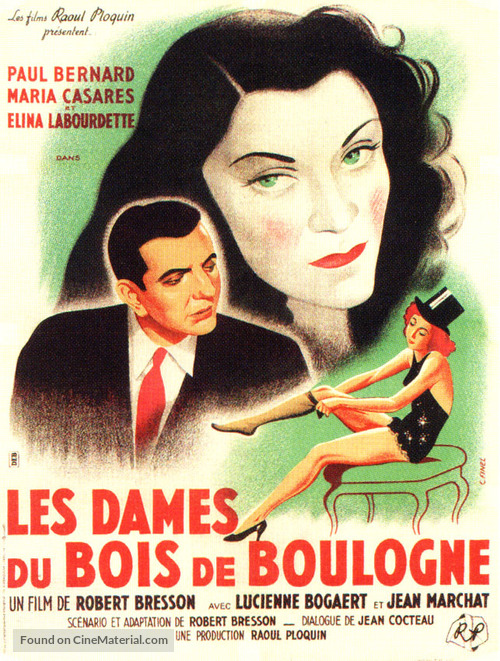
“Destiny is tragic but I prefer a fate we choose to one forced upon us.”
Perhaps the most straightforward cinematic example of the phrase “Hell hath no fury like a woman scorned,” Les Dames du Bois de Boulogne depicts a jilted socialite taking perverse pleasure as she manipulates her ex-lover into marrying a prostitute. Based on a section of Enlightenment philosopher Denis Diderot’s Jacques the Fatalist and his Master, Robert Bresson’s bleak second film smolders with a subdued intensity as its characters march steadily toward their inevitable fates. There are few frills; it’s a distressing story that is told straight. No humor, no hope, no way to look past this vindictive woman orchestrating a personal catastrophe for her ex-lover. The cinematic language that Bresson would develop in later films is still in its developmental stage here. His ideas about the way that sound and image each relate to the inner eye were not yet fully formed, and so, while Les Dames is good, it’s merely that. A building block for the auteur, but a footnote in the history books.
Les Dames is a savage film, single-minded in its portrayal of sustained revenge. But it is also languid—almost uneventful. Bresson was a controversial figure, earning a reputation as a singular auteur who inspired the French New Wave, particularly Godard and Truffaut, who were fundamental in the development of auteur theory and used Bresson as one of their key specimens. According to Godard (who had not yet started making films of his own at the time he said it), “Bresson is French cinema, as Dostoyevsky is the Russian novel and Mozart is German music.” That’s high praise, but, I think, not really applicable to this film, which was made before Bresson found his artistic groove and ditched professional actors for films like Diary of a Country Priest, Pickpocket, and Au Hasard Balthazar. His signature ascetic style features sparse musical accompaniment, a stripped down form of acting, and a heavy use of ellipses and creative scene transitions. He can sometimes slow down the pace to a degree that modern sensibilities would dismiss as tedious. But he’s not quite there with Les Dames; those stripped down elements are present, but he hasn’t yet freed himself from convention in the way he would in his subsequent efforts. His eye for shot composition and his subtly remarkable editing style are already present though. This leaves the modern viewer in an odd spot where some of the signature elements of the auteur are not obvious and the underlying story is not quite engaging enough to warrant much attention on its own, i.e. the film is solid but doesn’t really do enough to distinguish itself.
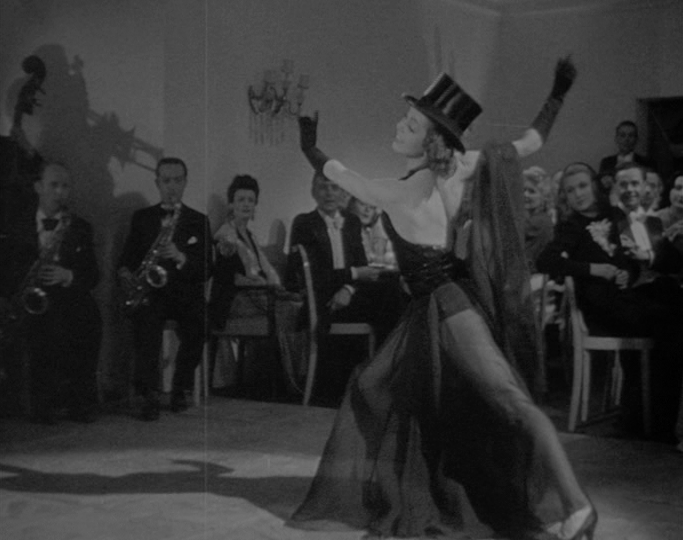
The film stars María Casares, who had also had a support role in Marcel Carné’s beloved Children of Paradise which came out only a few months before Les Dames. She has stunningly emotive facial features that allow her to convey quite a bit of drama without the use of language. Since Les Dames was only her second film and her experience was on stage, Bresson calmed her theatrical tendencies by having her take a sedative before filming. She plays Hélène, an aristocratic woman who, in the film’s opening scene, learns that her libertine boyfriend has lost interest in her. After digesting the news, she decides to trick him into confessing this change of heart to her face. She enters their apartment on the anniversary of their first having met each other. He has forgotten the occasion and missed their dinner date. She gifts him a gold cigarette case which would have been waiting at his seat for him at the restaurant. “Warm, cold, light, dark, incorruptible,” he says, without the slightest hint that the present means a thing to him. She baits him by confessing that she no longer finds herself excited by their love. Of course, this isn’t true, and when he immediately confesses that he feels the same, she must hide her devastation. They soon reach a compromise—they will remain close friends, confidants even, but are no longer bound to one another romantically. Instead of mourning her lost love, Hélène sets her mind on humiliating him.
The film is odd because the boyfriend, Jean (Paul Bernard), is a complete schmuck, an entirely fraudulent person who has tricked himself into believing that he is in the right. He’s very clearly not, so on the one hand, it’s easy to get behind Hélène’s quest for revenge; on the other, she goes about it by manipulating a downtrodden old friend, which makes Hélène almost as much of a villain as Jean.
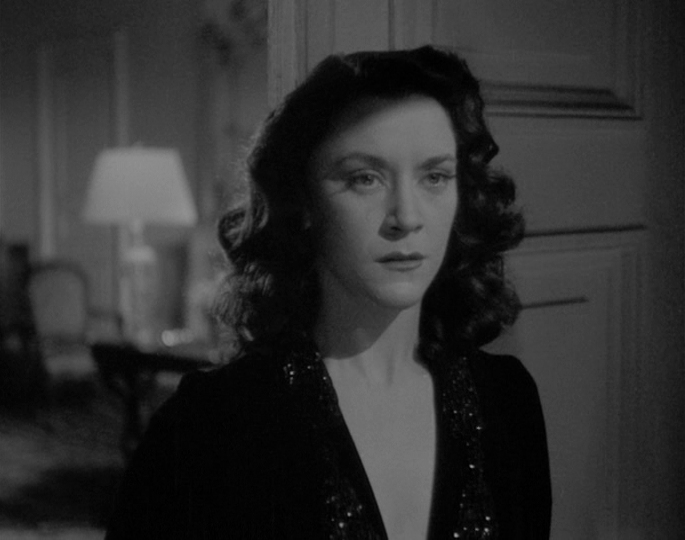
Agnès (Élina Labourdette), Hélène’s old roommate, is a cabaret dancer who once dreamed of becoming a ballerina at the opera. “Her life was dancing, but this was not her dream. She wanted to live for dancing, not dance to earn us a living,” her mother says. Falling on hard times, she’s resorted to dancing in nightclubs and selling her body to men to provide for herself and her mother, Madame D. (Lucienne Bogaert). The dynamic is bizarre, as the bullish men crowd around Agnès after her cabaret performance, and then pester her for sex inside the home she shares with her mother.
With a pretense of empathic compassion, Hélène introduces herself back into the family’s affairs, offering to pay off their debts and move them into an apartment. Soon, a “chance meeting” is arranged between Agnès and Jean, and the game begins. Hélène ensures that Agnès keeps her sordid past a secret as she tries to rehabilitate her reputation, and puts up a fake fuss about Jean intruding on the lives of her friends. While Agnès eventually comes to realize—but not understand why—she is being manipulated, Jean remains aloof until he has joined himself to Agnès in marriage, and he is told that most of the wedding guests are her former clients.
Hélène: You’ve married a tramp. She was a cabaret dancer. You’ve played a trick on me and now I’ve played one on you.
Jean: You?
Hélène: Yes, me. You don’t seem to realize where a woman’s scorn can lead.
Jean: You?
Hélène: Don’t be absurd. You’ve married a tramp. Now you must face the consequences. You’re suddenly so sentimental.
Jean: You’re horrid!
Hélène: Since your marriage seems to mean so much to you, you mustn’t run off. Return to Agnès’s side. You won’t be the only one to console her. All her lovers are inside. And there are plenty of them!
The ending conforms to the expectations of its era—despite the dark story, it ends with Agnès and Jean committing their lives to each other even after learning the truth of the past—which is minorly annoying, but doesn’t detract too much. In our current social climate, I think the film probably lacks some punch because like half our country thinks that sex work is not degrading but empowering.
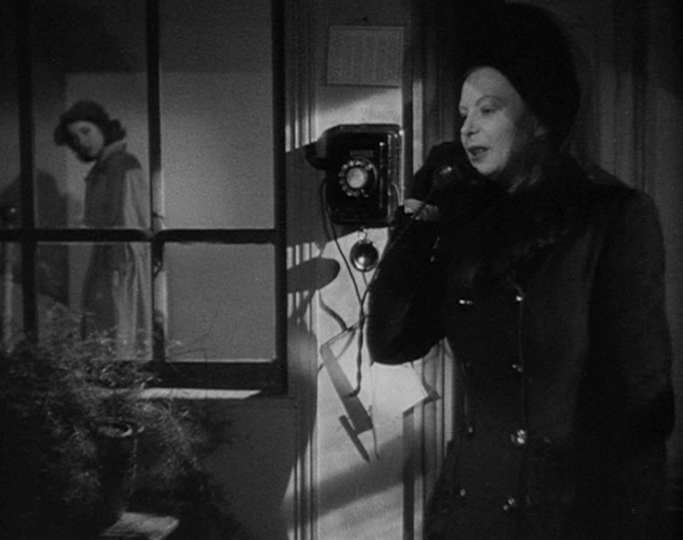
The film was shot in Vichy France during WWII, and though some film analysts read it as a fable of the Resistance, I think that’s a bit of a stretch. It’s certainly an interesting bit of history. Avant-garde poet/author/filmmaker Jean Cocteau, who relished being in the public eye, stuck around during the Occupation, managing to maintain an artistic career and remain in the good graces of the authorities. He was instrumental in getting Les Dames made, using his industry connections to resurrect it after filming halted due to electrical shortages and limited film stock. He also helped Bresson blend his pointed dialogue with the text lifted from the novel and is credited for the screenplay. It is strange to consider that Cocteau and Bresson decided to collaborate at all, given their drastically different approaches to cinema and life in general. Bresson, who had been imprisoned for eighteen months early in the war, preferred to be out of the spotlight and let his work speak for itself. In an interview from 1970, he claimed, “I hate publicity. One should be known for what he does, not for what he is. Nowadays a painter paints a bad painting, but he talks about it until it becomes famous. He paints for five minutes and talks about it on television for five years.” (The rest of the interview is great as well, covering topics like unconscious body language, casting an actress based on her voice alone, the elliptical editing process, and nudity in film; it’s linked at the bottom of this post.) Such an attitude is completely at odds with that of the performative Cocteau, whose wellbeing seemed intimately linked to his own public reception rather than the reception of his work.
Sources:
Hoberman, J. “Review: Bresson and the Elliptical Economies of a Master Filmmaker”. The New York Times. 7 December 2016.
Dixon, Wheeler Winston. “The Power of Resistance: Les Dames du Bois de Boulogne”. Senses of Cinema. March 2008.
Bresson, Robert. Interview by Charles Thomas Samuels. “ENCOUNTERING ROBERT BRESSON – by Charles Thomas Samuels”. Scraps from the Loft. 2 September 1970; transcript posted online 22 August 2017.